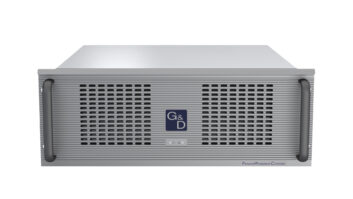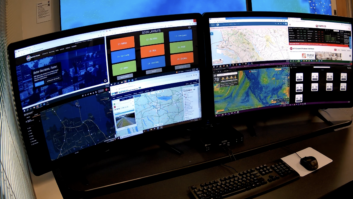IP-based KVM systems are increasingly becoming the norm for remote access, whether to connect users to key systems from home or to allow operators working in a network operations centre or control room to remotely control critical equipment that supports their work. And now with KVM-over-IP systems in place, many operations are taking advantage of virtualisation to realise further benefits to their operations and their bottom line.
Migrating to IP and virtualisation
Although the COVID-19 pandemic accelerated implementation of a variety of remote workflows, many enabled by IP-based technologies, the migration from proprietary protocols and proprietary switching mechanisms toward the distribution, routing, and extension of audio, video, and data over IP had already begun some years earlier. That shift toward IP – and to KVM over IP – was driven in part by standardisation of IP media transport (SMPTE ST 2110) for broadcast.
Flexible, cost-effective, and highly scalable, KVM over IP brings a control room unlimited scalability in terms of endpoints: source PCs, both physical and virtual machines, control interfaces, peripherals, and visualisation systems. For system administrators and operators, this translates to fast, convenient, and secure access to essential sources, data, and control functions, but without the noise, heat, or clutter of working alongside computing systems.
By moving from traditional physical machines to less-expensive virtual machines – situated locally or in a data centre – along with a centralised system management platform, administrators realise cost savings while boosting flexibility, enhancing performance, and increasing availability. With KVM devices capable of enabling access to both physical and virtual machines, as well as instant switching between them, a control room can undergo a continuous virtualisation process without significant impact on existing infrastructure, workflows, or the operator experience.
Leveraging KVM over IP to transform
Air traffic management is a perfect example of how KVM-over-IP extension and remote desktop access solutions increase situational awareness, improve efficiency, enable instantaneous switching among multiple systems, and lower operational costs in a high-intensity control room environment.
End-to-end KVM-over-IP solutions help air traffic controllers (ATCs) coordinate the arrival/departure of flights and control overflying planes by allowing them to remotely access all aviation control systems in real time, without any latency, and enabling them to control computers up to 80 km away from the ATC tower.
A fail-proof system designed for this environment will ensure that if an individual component fails, only that component will stop working. All other components in the system keep running. If necessary, the operator can switch to a back-up resource with the click of a mouse. Whether in the event of a failure or during peak times, a back-up operator working at another tower or remote airfield can step in to help.
Redundant KVM system managers keep network management running without interruption. Ideally, even if the manager goes offline, the air traffic controllers can still make connections and stay operating because the KVM system maintains their last known database.
With an advanced KVM-over-IP system in place, a modern control room realises these immediate benefits, as well as the potential for further efficiency gains through ongoing virtualisation and future expansion with next-generation KVM systems.







